Red "colossal"
23 March 1918 of the year 7 20 hours of the morning in the center of Paris, in the Republic Square, there was a strong explosion. In fright, the Parisians turned their eyes to heaven, but there were no zeppelins or airplanes. The assumption that Paris was bombarded by enemy artillery, at first did not occur to anyone, because the front line was in 90 km west of the city. But, alas, the mysterious explosions continued. Before 7 August 1918, the Germans fired 367 shells, of which 2 / 3 hit the center of the city, and a third went to the suburbs.
For the first time in the world, an ultra-long 210-mm cannon, called the Colossal by the Germans, fired at Paris. Its range reached 120 km, a little less than the famous Soviet ballistic missiles Scud (P-17) and more than the first production missiles "Tochka". Alas, the weight of the gun was 142 t, the weight of the entire installation was over 750 t, and the survivability of the barrel was very low.
We will go the other way
Russia. End of 1918 of the year. The country began a civil war. Soviet Republic in the ring of fronts. The population of Petrograd was reduced five times, famine and typhus raged in the city. And in December 1918 of the year, the Bolshevik Military Legislative Council decided to start work on "long-range guns". It must be honestly said that this revolutionary idea was put forward by the commander of the artillery range by the general of the tsarist army V.M. Trofimov. But revolutionaries politicians strongly supported the revolutionaries-artillerymen and established the Commission for Special Artillery Experiments (Kosartop).
It was only possible to achieve ultra-long-range shooting at that time in three ways:
create special guns with extra long trunks in 100 and more calibers (by that time, the length of ground artillery guns did not exceed the 30 club, and the ship artillery - 50 club);
to create electric, or, more precisely, electromagnetic tools, in which the acceleration of the projectile could be produced by the energy of the magnetic field;
create fundamentally new types of shells.
It was inexpedient to follow the German way - making an extra long barrel is technologically difficult and expensive, and in the presence of conventional belt shells, the barrel survivability did not exceed 100 shots. (Belt projectile is a projectile equipped with thin copper belts that, when fired, are pressed into the grooves of the bore and ensure the rotation of the projectiles.) From the 20th century 40s, copper was replaced with other materials in ceramics.)
Creating an ultra-long electromagnetic gun was on the shoulder of our scientists already in 1918 year. But apart from the huge costs of designing, manufacturing, testing such a tool, next to it would be necessary to install an average power plant. From 1918 onwards, information about the creation of electromagnetic guns has been systematically published, but, alas, not a single such installation has been put into service. Soviet designers decided to go the third way and create unique projectiles ultra-long range.
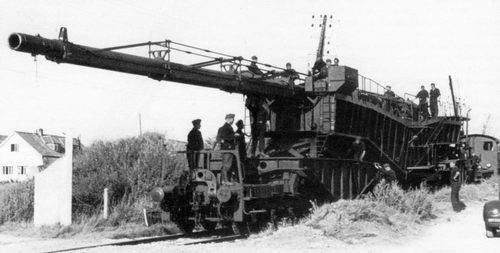
Workers 'and Peasants' Super Gears
The idea delighted all the red military authorities, but Marshal Tukhachevsky became the main ideologue of the introduction of super-shells.
From 1920 to 1939, huge sums were invested in the USSR for testing new type of top-secret projectiles. New tools for them were not created, only channels of already existing systems were altered. Nevertheless, tens of millions of rubles were spent on the reworking of such weapons, on the design and manufacture of thousands of prototypes, as well as on their lengthy tests. It is curious that almost all 20 years in parallel were working on three types of shells: polygonal, rifled and sub-caliber.
Multi-talented
Let's start with polygonal shells that had the shape of a regular polygon in cross section. In its middle part, the projectile corresponded to the shape of the canal. With such a device and precise finishing, the projectile adjoined for the most part of its surface to the channel walls, and it could communicate a high speed of rotational motion, since it was possible to give a large steepness of the channel twisting without fear of disrupting the leading parts of the projectile. Thanks to this, it was possible to dramatically increase the weight and length of the projectile, respectively, would have greatly improved the range and accuracy of fire.
At the beginning of the 1930-s, several 76-mm guns of the 1902 model of the year were converted to polygonal. Their channel had 10 edges, caliber (diameter of an inscribed circle) - 78 mm. On tests in 1932, a miracle happened ... The P-1 polygonal projectile weighing 9,2 kg flew at a distance of 12,85 km, and the P-3 projectile weighing 11,43 kg flew at 11,7 km. For comparison, regular projectiles weighing 6,5 kg had a range of 8,5 km. And this without changing the device of the gun, the trunk was only squandered accordingly.
Immediately, it was decided to transfer all divisional, corps, anti-aircraft artillery, as well as high-powered artillery to polygonal projectiles. On landfills, 152-mm B-10 guns and 76-mm anti-aircraft guns of the 1931 model of the year with polygonal shells were shot down. Urgently converted into polygonal ship and shore guns caliber 130, 180, 203 and 305 mm.
Screw and nut
In parallel with the polygonal test rifled shells were. As well as polygonal, rifled shells did not have leading copper belts. On their case, deep rifling or projections were made, with which the projectile entered the grooves (protrusions) of the barrel, like a screw in the nut. From 1932 to 1938, several dozen types of rifled shells from 37 to 152 mm were tested.
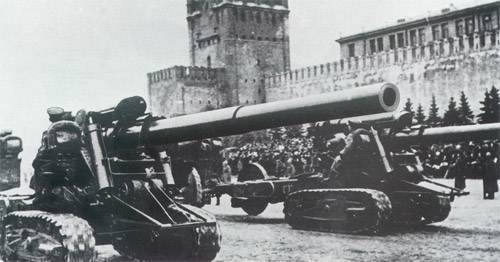
Active versus passive
Our engineers have achieved the greatest success with piercing shells (the caliber of which is smaller than the caliber of the barrel). The sub-caliber shells were then called “combined”, as they consisted of a pallet and an “active” projectile. The pan directed the movement of the projectile along the bore, and when the projectile departed from the canal it was destroyed.
For firing sub-caliber shells, two 356 / 50-mm guns made in 1915 – 1917 for Izmail-type battlecruisers were converted. The cruisers themselves were scrapped by the Bolsheviks.
At the beginning of 1935, the Bolshevik plant produced new 220 / 368-mm sub-caliber shells of 3217 and 3218 drawings with belt pallets, which were fired in June-August of 1935. (The belt belt is a pallet with copper belts, like a normal belt shell.) The weight of the structure was 262 kg, and the weight of 220-mm active projectile was 142 kg, the powder charge was 255 kg. On tests, the speed 1254 – 1265 m / s was obtained. When shooting 2 August 1935, the average range 88 720 m was obtained at an elevation angle of about 500. Lateral deviation when shooting was 100 – 150 m.
To further increase the firing range, work began to reduce the weight of the pallet.
At the end of the 1935 of the year, shells were fired with belt pans of the 6125 drawing. The weight of the active projectile was 142 kg, and the weight of the pallet 120 kg, firing range 97 270 m at an elevation angle of 420. Further work was continued along the path to lighten the belt pallet to 112 kg (6314 projectile drawing).
By that time, the remake of the second 356-mm gun in the 368-mm was completed. When testing 368-mm cannon No. 2 in 1936 - the beginning of 1937, the 6314 drawing projectile yielded satisfactory results, and based on them, in March, 1937 compiled an 368-mm cannon firing tables with these shells. The design of such a projectile weighed 254 kg, of which the belt pallet accounted for 112,1 kg, the active projectile 140 kg. The length of the 220-mm active projectile - 5 CLB. When firing a full charge in 223 kg, the initial speed was 1390 m / s, and the range - 120,5 km. Thus, the same range as that of the Paris Cannon was obtained, but with a heavier projectile. The main thing was that the usual sea cannon was used, and the survivability of the barrel was much more than the Germans. 368-mm trunks were supposed to be placed on the TM-1-14 railway transporters.
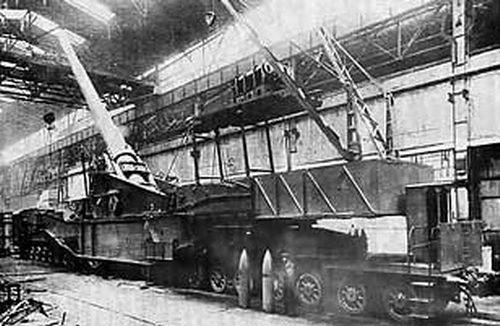
With Baltic greetings
The tasks for ultra-long rail guns have already been set - a “disruption of mobilization” in the Baltic countries, that is, simply speaking, the TM-1-14 railway installations should have been shelling the Baltic sabers with sabers.
In 1931, work began on the so-called "star" tray for combined projectiles. Tools with star-shaped trays had a small number of rifling (usually 3 – 4) large depths. The sections of the pallets of shells repeated the cross section of the channel. These guns can formally be attributed to guns with rifled projectiles.
To begin with, the star-shaped trays were tested on an 76-mm anti-aircraft gun of the 1931 model of the year and an 152-mm gun in the Br-2. And only then did the Barricades factory begin cutting into the CEA 356 / 50-mm cannon system. The caliber of the gun was 380 / 250 mm (for rifling / field), and the rifling - only four. Such guns were supposed to be installed on railway installations TM-1-14. It was not possible to test the CEA gun at full range, but according to calculations it should have exceeded 150 km.
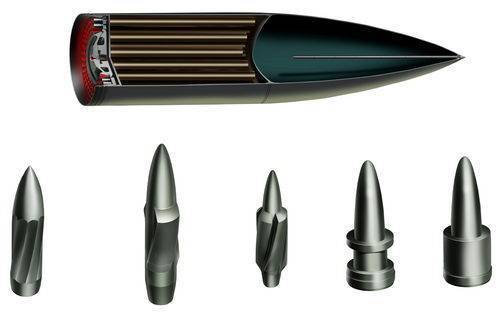
Gunners from Lubyanka
And then thunder struck! At the end of 1938, several watchful comrades compiled a large report “Test results for rifled and polygonal shells in 1932 – 1938 years”, which clearly showed how the results of the tests were falsified, how the designers of these shells actually stalled. All the tricks turned out to be in vain, and the results of the tests corresponded in principle to those obtained on the Volkovoye field in 1856 – 1870 in testing the Whitworth, Blake, and other guns.
The report was sent to the Red Army Directorate of Management, where they knew the situation and, at best, looked at it through their fingers. A copy of the report went to the NKVD, where nothing was known about it.
Denunciations - a thing, no doubt, nasty. But in the Archives of the Soviet Army, I carefully read the denunciation, and in the Military Historical Archives - a report on the shooting of 12-foot, 32-pounder and 9-inch Whitworth guns. And, alas, it all came together. Indeed, theoretically, polygonal shells gave a huge gain in weight and firing range, but with a long firing range they began to tumble, for loading them, if not engineers, then virtuosos from polygon teams, projectiles stuck in the channel, etc. Russian gunners at the direction of the authorities experienced several polygonal guns, and each time it was categorically excluded the possibility of adopting them in Russia. The test results of polygonal guns in 1928 – 1938 coincided one-on-one with the results obtained on the Volkov field. The same picture was with rifled shells.
Needless to say, in 1938 – 1939, dozens of “miracle projectile” developers were repressed, and in 1956 – 1960, they were fully rehabilitated. Work on the "miracle-shells" in the USSR ceased, and not one of them was used during the Great Patriotic War.
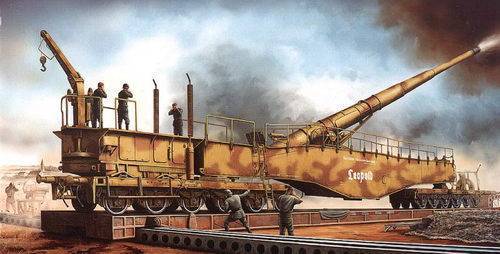
Russian death is good for German
In the summer of 1940, the German ultra-long-range guns opened fire on England across the English Channel. The shelling of southern England stopped only in the fall of 1944, after the Allied forces seized the French coast.
The Germans fired from special long-barreled guns with conventional shells, and shells with ready-made projections. So, 210-mm ultra-long-haul railway installation K12 (E) had a trunk of length 159 klb. The high-explosive projectile model 1935, weighing 107,5 kg, had an initial speed of 1625 m / s and a range of 120 km. At the beginning of the war for this gun was made a smooth barrel and a projectile to it weighing 140 kg, with an initial speed of 1850 m / s and a range of about 250 km.
Another ultra-long-range rail installation of the 278-mm K5E fired 28-cm rounds with ready-made protrusions, which had 12 deep rifling (depth 6,75 mm). Such barrels fired 28 cm Gr.35 grenades with a length of 1276 / 4,5 mm / klb and a weight of 255 kg. The shells had 12 finished protrusions on the hull. With a charge weighing 175 kg, the initial speed was 1130 m / s, and the range was 62,4 km. The Germans managed to keep the population of southern England at bay. But, of course, according to the criterion “efficiency / cost”, the German ultra-long gun significantly lost aviation and submarines.
Already by 1941, the Germans had reached the limit of capabilities of both conventional (belt) and projectiles with ready protrusions. To further increase the firing range and the weight of the explosive in the projectile, a radically new technical solution was required. And they were actively reactive projectiles, the development of which began in Germany in 1938 year. For the same K5 (E) railway cannon, an Raketen-Granate 4341 active-projectile weighing 245 kg was created. The muzzle velocity of the projectile was 1120 m / s. After the projectile was taken out of the barrel, the jet engine was turned on, which worked for 2 seconds. The average force of the projectile - 2100 kg. The engine fuel was 19,5 kg of diglycolic powder. The firing range of the Raketen-Granate 4341 projectile was 87 km.
In 1944, the development of a German super-long-range missile and artillery launcher for firing RAG shells began. The RAG missile weighed 1158 kg. The charge was small - only 29,6 kg, muzzle velocity - 250 m / s, but on the other hand the maximum pressure in the channel was also small - only 600 kg / cm2, which made it possible to make both the trunk and the entire system light.
At a distance of about 100 meters from the gun barrel, a powerful jet engine was activated. During the 5 minutes of its operation, approximately 478 kg of rocket fuel burned, and the velocity of the projectile increased to 1200 – 1510 m / s. The firing range was supposed to be about 100 kilometers.
It is curious that the work on the RAG system did not end with the surrender of Germany. In June, 1945, a group of German designers working on RAG, received a new chief, engineer colonel A.S. Butakova. For half a century, the dream of a red supergirl never left the head of Soviet commanders.
After the end of World War II, enthusiasm for ultra-long-range artillery began to gradually subside. Military designers were carried away by the new trend - rocket design. Rockets began to penetrate even into the traditional patrimony of large-caliber guns - the Navy. Read about the developments of the Russian ship rocket in the next issue of our magazine.
Information